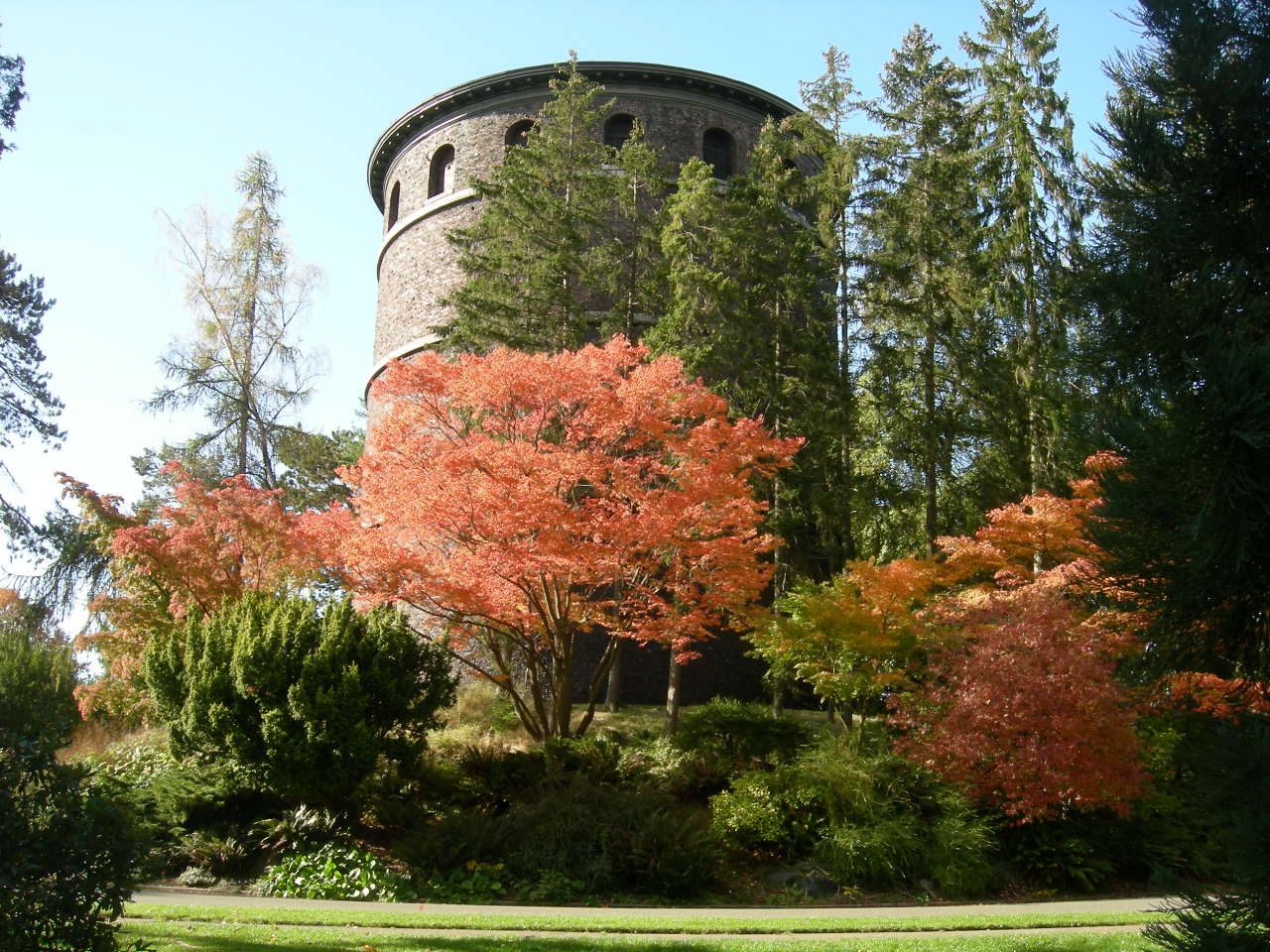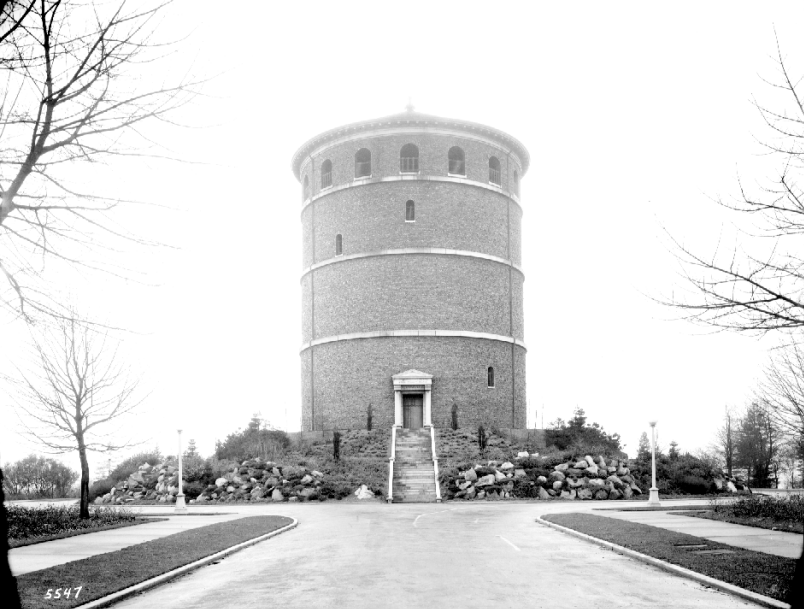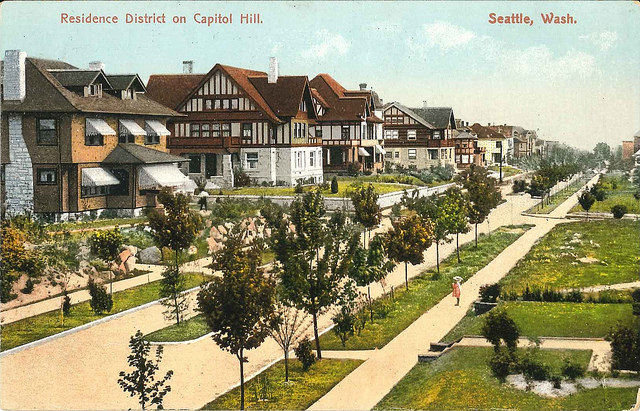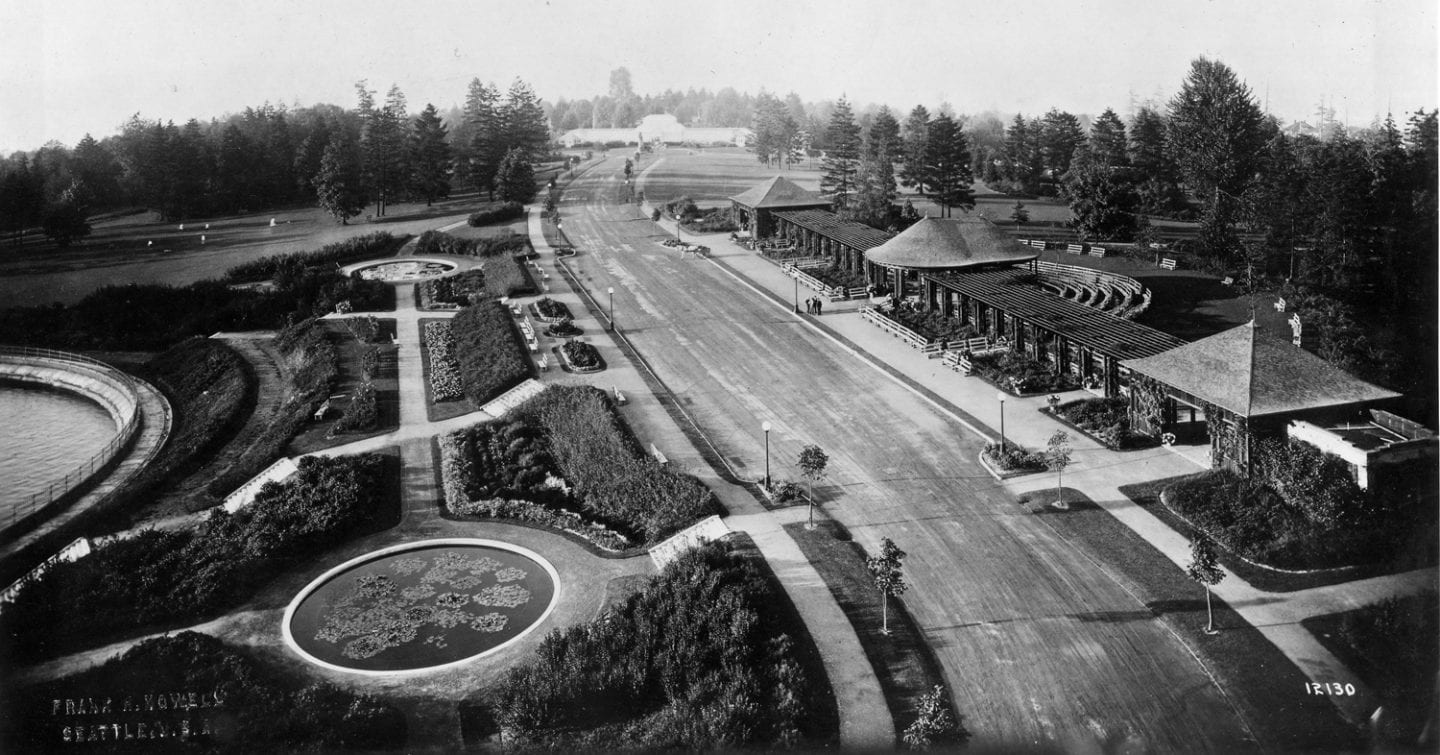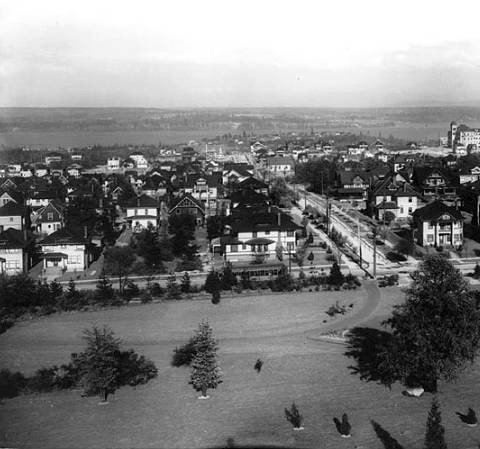-
The water tower is not ADA accessible. If you would like a printed version of the information panels about Seattle’s Olmsted legacy that are on the observatory level, please contact the Friends of Seattle’s Olmsted Parks.
-
Water Tower
14th Avenue East and East Prospect Street
The water tower is a part of the city water system. Because Seattle’s water system is gravity-fed, the reservoirs are located at the highest elevation possible. Water flows downhill from the Cedar River Watershed in the Cascade foothills and the pressure it builds up on the way down pushes the water up the hills into reservoirs across the city. They are perched on top of the city’s hills and water flows down to the homes and businesses below. You’ll notice, though, that the reservoir is below the concourse (the main drive through the park), which is located along the ridgeline. To reach those homes and businesses (and buildings like the Seattle Asian Art Museum), the water is pumped up into the water tower’s holding tank. It can then flow down to those higher elevation sinks and showers. That standpipe holds 883,000 gallons of water!
An interesting side note is that turbines located in the water pipes use water flowing through the pipes to generate power for the pumps that lift the water into the standpipes.
The building surrounding the standpipe was built in 1906. In a letter to his wife Sophie, John Charles Olmsted supposed that the building had been designed by Charles Saunders, a local architect who also served on the Board of Park Commissioners, but it is not clear that he created the design.
The walls are 27 inches thick at the base and 17 inches thick at the top. The courses of bricks are interrupted by three 16-inch bands of granite. The distance between those bands is less at the top than at the bottom, to create an illusion of greater height. It is constructed of clinker brick with granite surrounding each doorway. An engraving above each door extols the contents of the tower with the Latin phrase “Aqua Pura” or “Pure Water.” A plaque adjacent to the north entry honors L. B. Youngs, the water department superintendent who was instrumental in the development of Seattle’s water system.
Climb the interior stairways, which spiral up opposite sides of the standpipe, to reach the observation deck at the top of the structure. John Charles Olmsted located the standpipe along the concourse because it is the highest point in the park, affording the best views of the surrounding landscape. It also complements the nearby homes well and fits in with the more formal landscape of the concourse drive.
Olmsted chose 14th Avenue for the main entrance to the park because 15th Avenue was occupied with streetcar tracks and traffic. Instead, the approach to the park is along the residential street (which is also part of the park system) lined with trees and grand homes, which was known then as “Millionaire’s Row.”
You have reached the end of the tour. We hope you enjoyed learning about the history of Volunteer Park. To return to the starting point, walk back down to the circular drive, cross over to the north side and follow the sidewalk back to the Black Sun sculpture.
